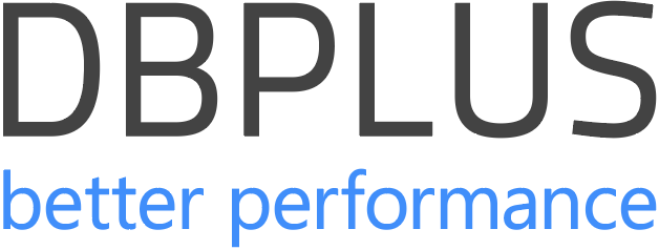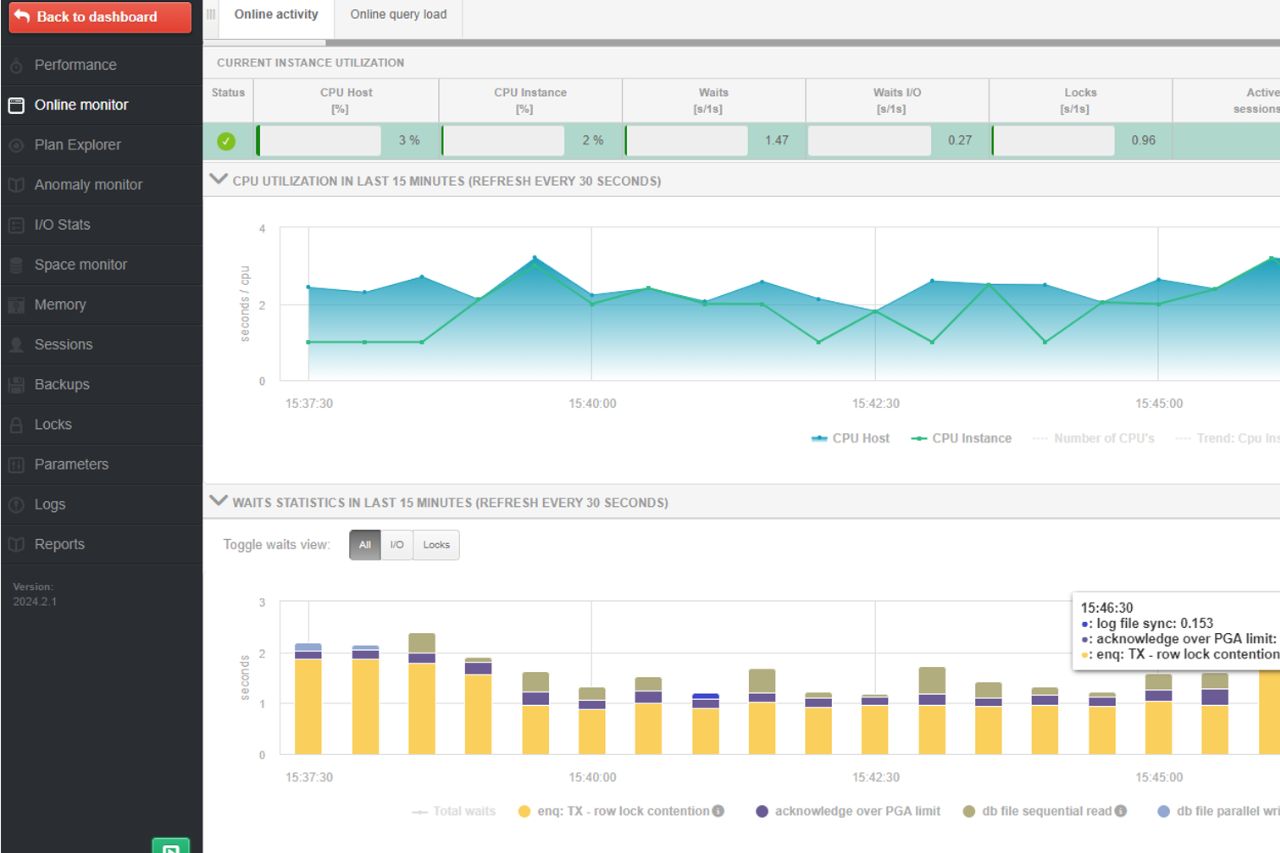26/09/2024
From Clustered to Specialized: Types of SQL Indexes and When to Use Them
Considering the sheer volume of data slugging through the digital pipelines, knowing your indexes shou be your bread and butter. Here, we’re slicing through the thick crust of complexity to expose clustered and non-clustered indexes and their cousins.
Why bother? Because we live at the age of instant grafitication. The speed at which you can retrieve data can be the difference between leading and trailing behind. That’s why we will be going through the ins and outs of clustered and non-clustered indexes and their specialized kin. On they way, keep in mind that each type has a role. For every one there is a specific scenario where its purpose becomes the most obvious.
It’s about knowing who to tap for the performance you crave, at precisely the right moment.
19/09/2024
Performance Monitor Changes in Version 2024.2—Part III: OS Stat Page
In the high-tech tangle of our time, more cores usually mean a slower tick-tock in the CPU clock. The sage database administrators find themselves revisiting the old battleground of processor usage. The latest update to DBPLUS Performance Monitor (Version 2024.2) includes significant enhancements that aid in this monitoring. Particularly through its dedicated page for OS statistics—OS Stat Page.
12/09/2024
10 Good Practices for Database Backups
The act of backing up databases may seem like a routine chore but it’s an art form, practiced by those who maneuver through the digital aisles with the finesse of a cat burglar and the foresight of a chess master. Much like a well-timed joke or a perfectly brewed cup of coffee, timing in backups is everything.
It ensures that the digital lifeblood of your business keeps pulsing through the veins of your operations, even when fate throws a wrench in the works. This set of good practices for database backups may not make you a master of all, but it will certainly steer you clear of the most dangerous (and costly) mistakes.
05/09/2024
Performance Monitor Changes in Version 2024.2—Part II: Grouping
We’ve been tinkering with DBPLUS PERFORMANCE MONITOR, again, and this time it’s all about getting a handle on those elusive user sessions with a feature that’s as adaptable as a chameleon in a rainbow—session grouping.
29/08/2024
When the Intern Deletes the Entire Database
We’ve all been the rookie, the greenhorn, the junior in the office. Some of us may have stumbled through minor blunders, but few can claim their mistakes shut down entire systems or wiped clean a whole database. Such extreme cases, we will be focusing on today, demonstrating the fragile boundary that exists in the digital environments of modern corporations. Let’s see what happens when the intern deletes the entire database.
15/03/2017
DBPLUS CeBIT 2017 in Hanover
We maintained a presence during the entire trade fair, as well as at the stand operated by the Polish Agency…
19/12/2024
Databases in 2025: New Architectures, Smarter AI, and Stronger Security
The year is 2025, and the databases that once seemed so clever have gotten old and cranky. They’re no longer content with sitting there, quietly holding onto rows and columns like good little librarians. Nope. Now they’ve got opinions. They’ve got styles. They’ve got ideas about how to organize themselves, how to spread out across the clouds, how to speak human language, and how to lock the door behind you when you’re done rummaging through their shelves.
The old way of doing things — shoving everything into a single warehouse and hoping for the best — is about as appealing as canned spinach. So, what will we do instead?
14/11/2024
What’s New in DBPLUS Performance Monitor 2024.3
In the latest update of DBPLUS PERFORMANCE MONITOR, version 2024.3, we’re rolling out exciting enhancements and brand-new features. All are designed to elevate your database monitoring and management capabilities to the next level.
From real-time online monitoring improvements to smarter notification systems, we’re excited to walk you through what’s new, what’s better, and how these changes can make a big difference in managing your databases.
26/09/2024
From Clustered to Specialized: Types of SQL Indexes and When to Use Them
Considering the sheer volume of data slugging through the digital pipelines, knowing your indexes shou be your bread and butter. Here, we’re slicing through the thick crust of complexity to expose clustered and non-clustered indexes and their cousins.
Why bother? Because we live at the age of instant grafitication. The speed at which you can retrieve data can be the difference between leading and trailing behind. That’s why we will be going through the ins and outs of clustered and non-clustered indexes and their specialized kin. On they way, keep in mind that each type has a role. For every one there is a specific scenario where its purpose becomes the most obvious.
It’s about knowing who to tap for the performance you crave, at precisely the right moment.
19/09/2024
Performance Monitor Changes in Version 2024.2—Part III: OS Stat Page
In the high-tech tangle of our time, more cores usually mean a slower tick-tock in the CPU clock. The sage database administrators find themselves revisiting the old battleground of processor usage. The latest update to DBPLUS Performance Monitor (Version 2024.2) includes significant enhancements that aid in this monitoring. Particularly through its dedicated page for OS statistics—OS Stat Page.
22/08/2024
Performance Monitor Changes in Version 2024.2—Part I: Online Monitor
Statistics can lie—” The only statistics you can trust are those you falsified yourself” This old adage attributed to Sir Winston Churchill rings especially true if you’re dealing with daily database monitoring. When data is only captured in 15-minute intervals, transient issues that can severely impact performance might slip through the cracks, unnoticed and unaddressed until they’ve already caused significant problems.
In the newest release of the DBPLUS PERFORMANCE MONITOR, we’re extremely excited to show you the solution that the new functionality brings to the table.
16/09/2020
Actinium Consulting GmbH and DBPLUS enter into partnership
Actinium Consulting GmbH specializes in business intelligence and ERP. The software developments by DBPLUS for database optimization and real-time data…
31/03/2020
dbi services and DBPLUS enter into a partnership
Delémont, March 31, 2020 – dbi services has secured a partnership with DBPLUS, a software development company which specializes in…
16/10/2019
Partner for Performance representing DBPLUS at the DOAG Conference and Exhibition 2019 in Nuremberg
Partner for Performance representing DBPLUS at the DOAG Conference and Exhibition 2019 in Nuremberg You wish to become more familiar…
16/07/2019
DBPLUS on “IT Tage” in Frankfurt
“Everything under one roof!” is the motto of the IT-Days 2019 from December 9th to 12th in the Cape Europa,…
17/06/2019
DBPLUS expands partner network
Another companies from the CEE region joined the group of DBPLUS partners. As a result, DBPLUS Clients gain access to…
14/11/2024
What’s New in DBPLUS Performance Monitor 2024.3
In the latest update of DBPLUS PERFORMANCE MONITOR, version 2024.3, we’re rolling out exciting enhancements and brand-new features. All are designed to elevate your database monitoring and management capabilities to the next level.
From real-time online monitoring improvements to smarter notification systems, we’re excited to walk you through what’s new, what’s better, and how these changes can make a big difference in managing your databases.
22/08/2024
Performance Monitor Changes in Version 2024.2—Part I: Online Monitor
Statistics can lie—” The only statistics you can trust are those you falsified yourself” This old adage attributed to Sir Winston Churchill rings especially true if you’re dealing with daily database monitoring. When data is only captured in 15-minute intervals, transient issues that can severely impact performance might slip through the cracks, unnoticed and unaddressed until they’ve already caused significant problems.
In the newest release of the DBPLUS PERFORMANCE MONITOR, we’re extremely excited to show you the solution that the new functionality brings to the table.
04/04/2024
Performance Monitor (Release 2024.1)
In April 2024, we published another version of the Performance Monitor for Oracle, Microsoft SQL Server, PostgreSQL, and SAP Hana…
24/01/2024
New version Performance Monitor (Release 2023.4)
In December 2023, we released the next version of Performance Monitor application for Oracle, Microsoft SQL Server, PostgreSQL and SAP…
05/07/2023
New version Performance Monitor (Release 2023.2)
On July 5, 2023, we released a new version of Performance Monitor for Oracle, Microsoft SQL Server, PostgreSQL and SAP…

















